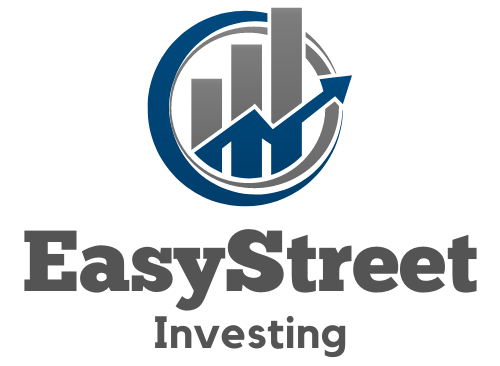In the quest for financial growth, high-yield investment opportunities can seem like a golden ticket. But hold your horses! Many of these so-called “golden” prospects are fool’s gold, elaborate scams designed to line the pockets of fraudsters. This article shines a spotlight on the murky world of investment fraud, guiding you through the minefield of empty promises and too-good-to-be-true returns. You’ll learn how to spot the red flags that signal danger and navigate towards safer harbors for your hard-earned cash.
We’ve all heard the old adage, “If it sounds too good to be true, it probably is.” That couldn’t be truer when it comes to sifting through investment offers that promise sky-high returns with little to no risk. Buckle up, because we’re diving deep into the tactics scammers use to charm their way into your wallet. From understanding psychological tricks to recognizing bogus ventures, this article is your trusty compass in uncharted financial waters. By the end, you’ll be armed with practical tips and savvy insights to keep your investments secure and scam-free.
Important Highlights
1. Recognize the classic signs of high-yield investment scams, which include promises of exceptional returns with little or no risk, aggressive sales pitches pressuring you to commit quickly, and unregistered investments often pitched by unlicensed sellers. Be wary when an opportunity seems too good to be true, as it likely is; genuine investments typically do not guarantee quick profits.
2. Conduct thorough research before investing by checking if the investment and the person offering it are registered with financial authorities like the U.S. Securities and Exchange Commission (SEC) or FINRA’s BrokerCheck. Legitimate investments are usually associated with transparent information about the company’s finances, the risks involved, and how the investment generates returns.
3. Be cautious of unsolicited offers that come via email or social media, a common tactic used in investment scams. Scammers often use high-pressure tactics to create a sense of urgency, such as limited-time offers or guarantees of high returns at no risk. Take your time to make informed decisions and consult trusted financial advisors or resources for guidance.
4. Understand that diversification is key in managing investment risk; putting all your eggs in one basket can be disastrous if that investment is fraudulent. Spread your investments across different asset classes and industries to minimize potential losses. A diversified portfolio reduces overall risk and helps protect against scams targeting specific sectors.
5. If you suspect fraudulent activity or have been approached with a suspicious offer, report it immediately to regulatory bodies such as the SEC or your country’s financial authority. Prompt reporting can help protect not only yourself but also others from falling victim to similar schemes. The sooner these frauds are exposed, the quicker authorities can take action to shut them down and hold scammers accountable.
For further information on how to safeguard against deceitful investment opportunities, visit the investor education section on the SEC’s website.
Recognizing the Red Flags of High-Yield Investment Programs (HYIPs)
One of the first steps in avoiding high-yield investment scams is to recognize the telltale signs. Common red flags include promises of unsustainably high returns, aggressive marketing tactics, and an emphasis on recruiting new investors over actual product or service offerings. If an opportunity guarantees you a return that seems too good to be true, it most likely is.
Evaluating Promotional Materials with a Critical Eye
Scammers often use sophisticated promotional materials to lure investors. Be wary of glossy brochures or websites promising quick wealth or using financial jargon intended to confuse or overwhelm. It’s essential to do your due diligence by researching the company and its track record. Resources like the U.S. Securities and Exchange Commission (SEC) offer valuable information for investor protection.
Distinguishing Between Legitimate and Phony Testimonials
Testimonials can appear convincing but take them with a grain of salt. Many fraudulent schemes fabricate testimonials or pay actors to create a false sense of security among potential investors. Look for independent reviews and verify the legitimacy of supposed success stories.
Analyzing the Investment’s Business Model for Viability
A critical examination of the business model can expose potential frauds. Any legitimate investment should have a clear method for generating returns. Question how profits are made—if the explanation is vague or relies solely on new investor funds (akin to a Ponzi scheme), steer clear.
The Importance of Regulatory Compliance
All legitimate investments must comply with financial regulations. Check whether the investment is registered with appropriate authorities such as the SEC or FINRA. Lack of compliance is a major warning sign that should not be ignored.
Best Practices for Conducting Thorough Due Diligence
To safeguard yourself from investment fraud, conduct thorough due diligence before committing any funds. This process should involve reviewing financial statements, understanding management’s background, and assessing market conditions. Use reliable sources and don’t hesitate to seek advice from financial professionals.
Tactics Scammers Use to Pressure Investors into Committing
Beware of high-pressure sales tactics such as limited-time offers, pushing you to invest immediately without time for consideration or research. True investment opportunities will withstand scrutiny and won’t disappear overnight.
Utilizing Online Tools and Resources for Background Checks
Leverage online tools provided by regulatory bodies like the BrokerCheck by FINRA to investigate brokers and investment programs. These resources are invaluable for verifying credentials and past disciplinary actions.
Navigating Social Proof Strategies Used by Fraudsters
Social proof, like crowds at events supporting an investment, can be manipulated. Don’t allow group enthusiasm to replace individual analysis and intuition regarding an investment’s legitimacy.
Mitigating Risks Through Diversification and Conservative Investments
Diversification is key in risk management when investing. Avoid putting all your eggs in one basket, especially if that basket is promising unusually high returns. Opt instead for conservative investments that may offer more modest returns but come with lower risks.
Cybersecurity Measures to Protect Your Financial Information
In today’s digital world, ensuring your personal and financial information remains secure is crucial. Use strong passwords, two-factor authentication, and secure networks when conducting any online financial transactions.
The Role of Emotional Intelligence in Investment Decisions
Your emotional state can greatly influence your decision-making process in investments. It’s vital to remain calm and detached when evaluating potential investments, focusing on facts rather than feelings or hype.
The Lifespan of High-Yield Investment Schemes: A Pattern Recognition Guide
Most HYIPs have short lifespans as they rely on constant influxes of new money to pay out returns promised to earlier investors—a structure that is unsustainable in the long run. Recognize this pattern early on to avoid falling victim to these schemes.
What Are Some Actionable Steps You Can Take Right Now?
- Verify any potential investment through trusted regulatory websites such as SEC.gov or BrokerCheck by FINRA.
- Diversify your portfolio across different asset classes and sectors to mitigate risks associated with high-yield investments.
- Maintain skepticism towards guaranteed returns; consult financial advisers if necessary before making significant commitments.
- Stay informed about common scam tactics by subscribing to investor education resources offered by reputable organizations like the Federal Trade Commission (FTC).
- Prioritize cybersecurity measures such as using encrypted websites (look for HTTPS) when handling sensitive information online.
- Rely on quantitative data over emotional appeals when assessing an investment opportunity’s validity.
- Create a checklist based on these guidelines so you’re prepared next time you encounter a potential high-yield investment opportunity.
Frequently Asked Questions
How can I tell if an investment offer is too good to be true?
Trust your instincts. If the promised returns sound excessively high with little or no risk, it’s a red flag. Investments generally follow the rule that higher rewards come with higher risks. Compare the offer to current market rates to spot any unrealistic promises.
What are some warning signs of a high-yield investment scam?
Be wary of aggressive sales tactics, secrecy, or pressure to invest quickly. Scammers often avoid detailed information and may not be registered with financial authorities. Also, watch for guaranteed returns and overly consistent performance despite market conditions.
Where should I check the legitimacy of an investment company?
Always verify the registration and licensing of any firm through official resources like the SEC’s EDGAR database or FINRA’s BrokerCheck. Legitimate companies have transparent records and regulatory oversight.
How important is diversification in avoiding investment scams?
Diversifying your portfolio is crucial. It minimizes risk by spreading investments across various assets. Avoid putting all your funds into one opportunity, especially if it seems suspiciously lucrative.
Is it safe to trust investment advice from social media or forums?
Social platforms often contain unverified information. Always cross-check advice with credible sources and consult a financial advisor before making investment decisions based on social media tips.
What steps should I take if I suspect I’ve encountered an investment scam?
If you suspect a scam, cease all communications with the party involved and report them to authorities such as the SEC, CFTC, or your local consumer protection agency. Do not invest any further money and warn others about your experience.
Can high returns be achieved without high risk?
Typically, high returns come with high risks. While there are exceptions, they’re rare and usually involve sophisticated strategies or insider knowledge that’s not accessible to average investors.
Should I pay upfront fees for investment opportunities?
Paying large upfront fees is unusual for legitimate investments. Many scams involve convincing investors to pay substantial fees before seeing any returns. Thoroughly scrutinize any request for upfront payment.
What role do background checks play in avoiding scams?
Conducting thorough background checks on individuals and firms proposing investments can reveal past legal issues or fraudulent activity, helping you steer clear of scammers.
How does due diligence help in spotting potential investment frauds?
Diligence involves deep research into every aspect of the investment opportunity, including the track record of the company, its leaders, financial statements, and market conditions. This analysis is key in identifying inconsistencies or signs of fraudulent schemes.
In Closing Thoughts
In navigating the tricky waters of high-yield investments, skepticism can be your best defense. Remember that while attractive profits are appealing, they shouldn’t cloud judgment when it comes to protecting your hard-earned money against scams that promise much but deliver little. Stay informed, stay cautious, and always prioritize doing your homework before diving into any investment opportunity.
To sum up, keep learning about common tricks used by scammers and maintain open lines of communication with financial advisors or regulatory bodies when in doubt. By cultivating these habits, you strengthen your ability to recognize genuine opportunities while sidestepping those too perilous—or too deceptive—to merit consideration.

